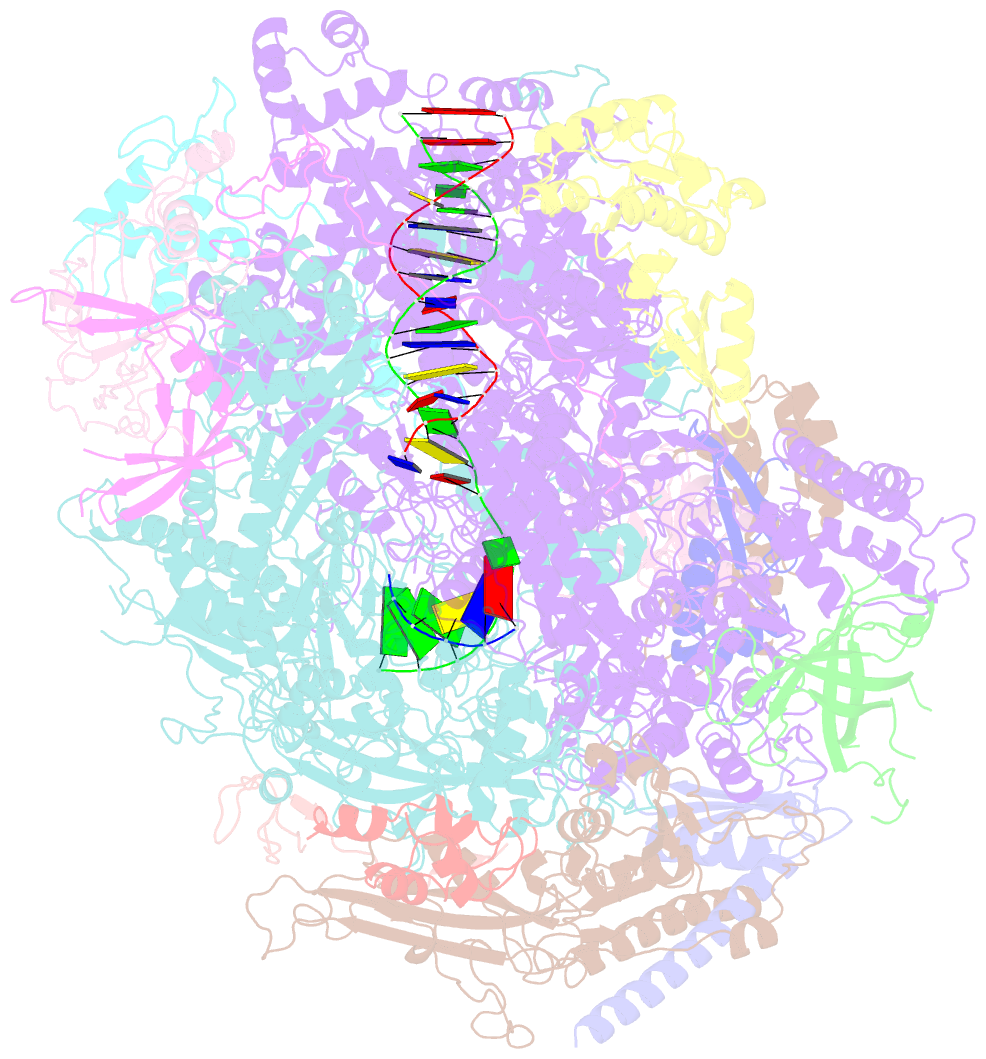Summary information and primary citation
- PDB-id
- 7dn3; SNAP-derived features in text and JSON formats;
DNAproDB
- Class
- transcription
- Method
- cryo-EM (3.5 Å)
- Summary
- Structure of human RNA polymerase iii elongation complex
- Reference
- Li L, Yu Z, Zhao D, Ren Y, Hou H, Xu Y (2021): "Structure of human RNA polymerase III elongation complex." Cell Res., 31, 791-800. doi: 10.1038/s41422-021-00472-2.
- Abstract
- RNA polymerase III (Pol III) transcribes essential structured small RNAs, such as tRNAs, 5S rRNA and U6 snRNA. The transcriptional activity of Pol III is tightly controlled and its dysregulation is associated with human diseases, such as cancer. Human Pol III has two isoforms with difference only in one of its subunits RPC7 (α and β). Despite structural studies of yeast Pol III, structure of human Pol III remains unsolved. Here, we determined the structures of 17-subunit human Pol IIIα complex in the backtracked and post-translocation states, respectively. Human Pol III contains a generally conserved catalytic core, similar to that of yeast counterpart, and structurally unique RPC3-RPC6-RPC7 heterotrimer and RPC10. The N-ribbon of TFIIS-like RPC10 docks on the RPC4-RPC5 heterodimer and the C-ribbon inserts into the funnel of Pol III in the backtracked state but is more flexible in the post-translocation state. RPC7 threads through the heterotrimer and bridges the stalk and Pol III core module. The winged helix 1 domain of RPC6 and the N-terminal region of RPC7α stabilize each other and may prevent Maf1-mediated repression of Pol III activity. The C-terminal FeS cluster of RPC6 coordinates a network of interactions that mediate core-heterotrimer contacts and stabilize Pol III. Our structural analysis sheds new light on the molecular mechanism of human Pol IIIα-specific transcriptional regulation and provides explanations for upregulated Pol III activity in RPC7α-dominant cancer cells.





